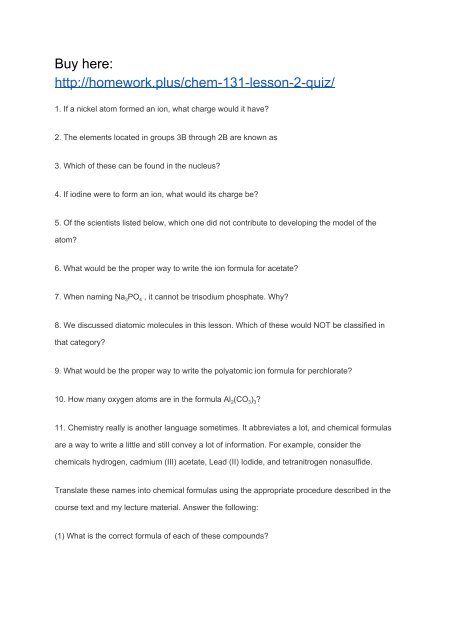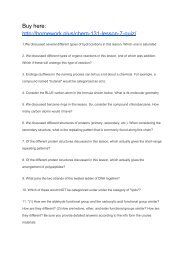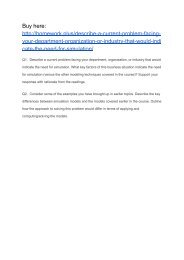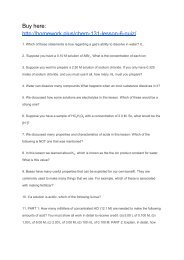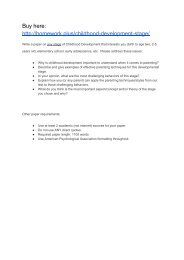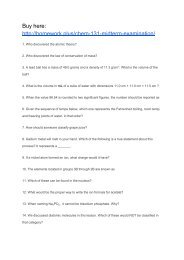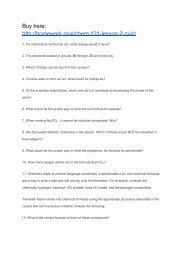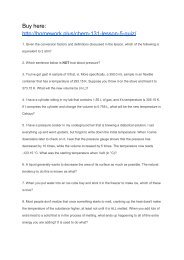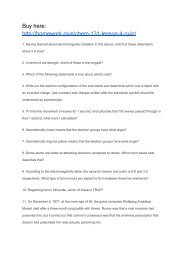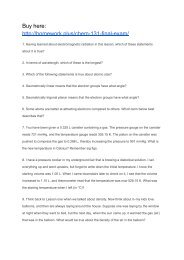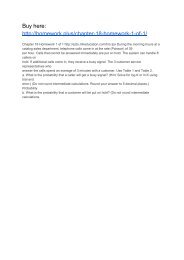CHEM 131 Lesson 2 Quiz
CHEM 131 Lesson 2 Quiz
CHEM 131 Lesson 2 Quiz
Create successful ePaper yourself
Turn your PDF publications into a flip-book with our unique Google optimized e-Paper software.
Buy here:<br />
http://homework.plus/chem-<strong>131</strong>-lesson-2-quiz/<br />
1. If a nickel atom formed an ion, what charge would it have?<br />
2. The elements located in groups 3B through 2B are known as<br />
3. Which of these can be found in the nucleus?<br />
4. If iodine were to form an ion, what would its charge be?<br />
5. Of the scientists listed below, which one did not contribute to developing the model of the<br />
atom?<br />
6. What would be the proper way to write the ion formula for acetate?<br />
7. When naming Na 3 PO 4 , it cannot be trisodium phosphate. Why?<br />
8. We discussed diatomic molecules in this lesson. Which of these would NOT be classified in<br />
that category?<br />
9. What would be the proper way to write the polyatomic ion formula for perchlorate?<br />
10. How many oxygen atoms are in the formula Al 2 (CO 3 ) 3 ?<br />
11. Chemistry really is another language sometimes. It abbreviates a lot, and chemical formulas<br />
are a way to write a little and still convey a lot of information. For example, consider the<br />
chemicals hydrogen, cadmium (III) acetate, Lead (II) Iodide, and tetranitrogen nonasulfide.<br />
Translate these names into chemical formulas using the appropriate procedure described in the<br />
course text and my lecture material. Answer the following:<br />
(1) What is the correct formula of each of these compounds?
(2) Explain how exactly (i.e. the procedure used) you arrived at your answer...in other words,<br />
walk me through your thinking. You will not receive credit if you don't show your work in detail.<br />
12. Describe, in detail, the "anatomy" of an atom. Include a discussion of all subatomic particles,<br />
any associated charges, their locations, how they interact with one another, and explain which of<br />
these particles actually identify the atom on the periodic table. Also include a discussion on which<br />
of these may change in number in the case of isotopes


